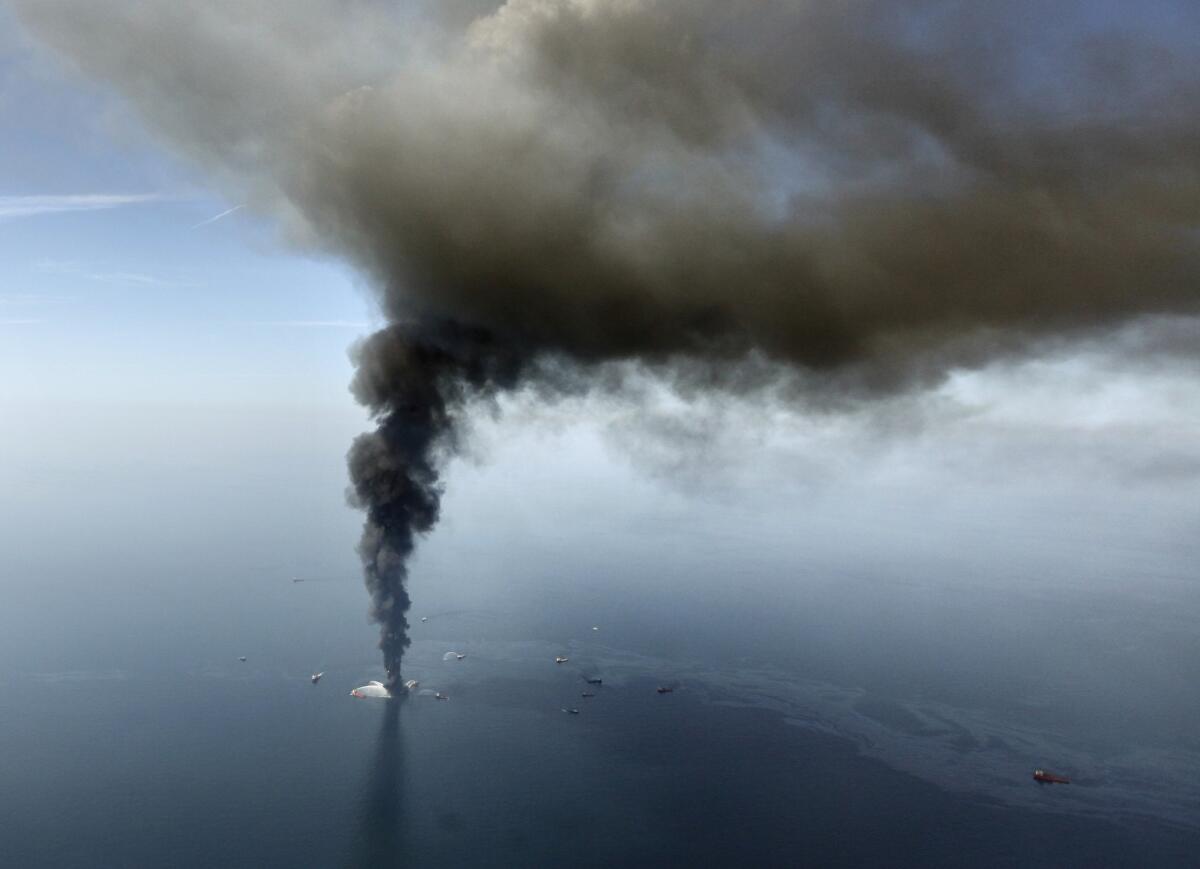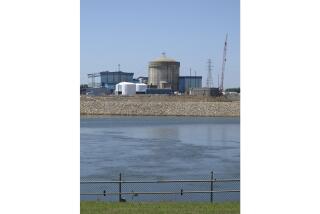Flawed drilling gear still in use after BP oil spill, board says

- Share via
Reporting from Washington — Design problems with a blowout prevention system contributed to the 2010 Deepwater Horizon oil rig disaster, and the same equipment is still commonly used in drilling four years after the Gulf of Mexico oil spill, according to a report issued by the federal Chemical Safety and Hazard Investigation Board.
The board concluded that the “blowout preventer” — a five-story-tall series of seals and valves that was supposed to shear the drill pipe and short-circuit the explosion — failed for reasons the oil industry did not anticipate and has not fully corrected.
Despite improved regulation of deep-water drilling since the disaster, the board found that problems persist in oil and gas companies’ offshore safety systems.
“This results in potential safety gaps in U.S. offshore operations and leaves open the possibility of another similar catastrophic accident,” said Cheryl MacKenzie, lead investigator of the safety board inquiry.
The blowout of BP’s Macondo well in April 2010 killed 11 men and spewed nearly 5 million barrels of oil into the Gulf of Mexico, making it the worst offshore oil disaster in United States history. Several federal commissions have investigated the missteps that occurred on the Deepwater Horizon drilling rig in the days and hours leading up to the explosion, which investigators said had its roots in corporate mismanagement and inadequate government oversight of the oil industry.
The chemical safety board, which examines industrial accidents but lacks regulatory authority, focused its inquiry on the blowout preventer and safety practices. The blowout preventer, or BOP, sits on the ocean floor below the drilling rig. The drilling pipe from the platform runs through the blowout preventer into the earth and toward the oil and gas deposits.
If oil or gas, which is under high pressure underground, accidentally comes up the well bore and pipe, the blowout preventer is supposed to cut off the flow higher up to the platform. In the case of the Deepwater Horizon, the lower valves in the blowout preventer closed, letting pressure continue to build, which eventually bent the drill pipe, the safety board study found.
The last line of defense, a “blind shear ram” device inside the blowout preventer, could not cut the pipe effectively, and “actually punctured the buckled, off-center pipe, sending huge additional volumes of oil and gas surging toward the surface,” the safety board said in the report released Thursday.
Since the spill, at least one company, GE Oil and Gas, has designed a new blowout preventer that can cut a similarly bent pipe, but many rigs continue to use the same equipment found at Deepwater Horizon, the report said.
“The failed design of the blowout preventer has not been addressed, and many existing rigs rely on the same design that failed on Deepwater Horizon,” said Jackie Savitz, vice president of U.S. oceans at Oceana, an environmental group. “At the same time, measures that could truly prevent spills, or improve spill response, were passed over.”
The American Petroleum Institute and the Interior Department, which oversees offshore drilling, countered the report, asserting that considerable improvements had been made to offshore safety practices after the gulf oil spill.
“There is nothing here that hasn’t already been exhaustively addressed by regulators and the industry,” said Brian Straessle, a spokesman for API, the industry’s largest trade group. “The report appears to omit significant facts and ignores the tremendous strides made to enhance the safety of offshore operations.”
More to Read
Sign up for Essential California
The most important California stories and recommendations in your inbox every morning.
You may occasionally receive promotional content from the Los Angeles Times.














